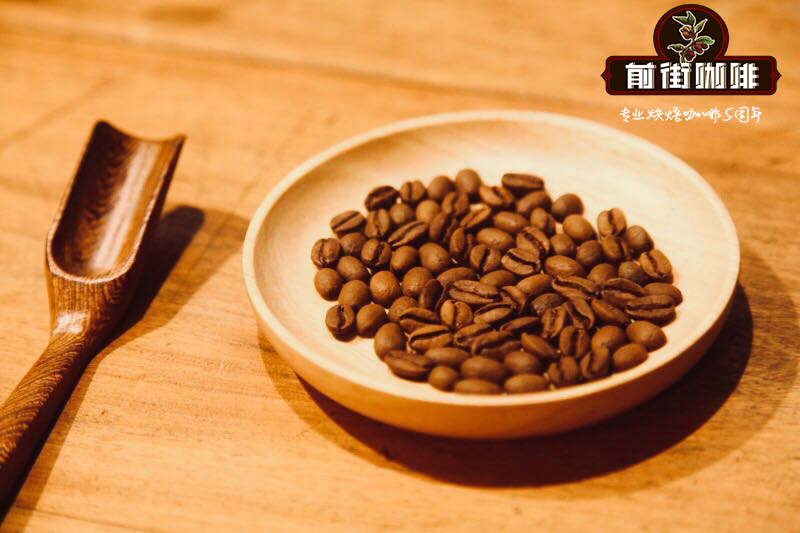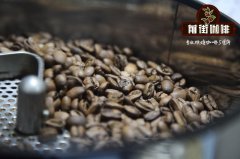The growing environment of coffee where can coffee be planted in a suitable coffee growing area

Professional coffee knowledge exchange more coffee bean information please follow the coffee workshop (Wechat official account cafe_style)
Reference conditions for coffee cultivation
The growing environment of coffee will affect the quality of coffee.
Climatic conditions
Arabica coffee is not resistant to high temperature and humid climate, nor can it stay at a low temperature below 5 ℃ for a long time, so it is planted on steep slopes of 1000-2000 Michael above sea level. On the other hand, Robusta coffee is cultivated in lowlands below 1000 meters above sea level because of its strong adaptability (Robusta's original meaning is "tenacious and strong").
But Arabica coffee is not resistant to strong sunlight and extreme heat, so it is suitable for growing in terrain prone to morning fog, especially where there is a large temperature difference between day and night. In addition, some places will plant shelter trees in order to avoid direct sunlight, such as bananas, maize, mango trees and so on.
Soil quality
To put it simply, the soil suitable for growing coffee is fertile volcanic soil with enough moisture and moisture and rich in organic matter. The Ethiopian plateau is covered with this kind of volcanic rock weathered soil, so. Soil rich in humus has naturally become one of the basic conditions suitable for growing coffee.
In fact, coffee production areas such as the Brazilian plateau (called "Terra rossa", meaning fertile red soil weathered by basalt), the highlands of Central America, the periphery of the South American Andes, the African plateau, the West Indies and Java (some of the soils are also volcanic rocks, or a mixture of volcanic ash and humus), are also the same as the Ethiopian plateau. Have fertile soil with plenty of water.
Soil has a subtle effect on the taste of coffee. For example, coffee grown on slightly acidic soil will also have a strong sour taste; for example, the soil around Rio de Janeiro in Brazil has an iodine flavor, and coffee will also be contaminated with that unique flavor by shaking the fruit to the ground when picking coffee beans.
Topography and height
It is generally believed that the coffee produced in the highlands is of better quality. Coffee-producing countries in Central America will use "elevation" as the grading standard because of the mountains that cross the middle of the continent. For example, SHB in Guatemala (abbreviated from the prefix ·Strictly ·Hard ·Bean), the highest of the seven grades is called SHB, indicating that it is produced at an altitude of about 1370 meters above sea level.
Although the coffee farm is located on steep slopes and is not convenient for transportation, transportation, cultivation and management, this terrain has low temperatures and is prone to morning fog, which can ease the strong sunshine peculiar to the tropics and allow time for the coffee fruit to fully mature.
However, high-end coffee such as "Blue Mountains of Jamaica" and "Kona of Hawaii" are not harvested in the highlands. Because as long as there is the right temperature, rainfall and soil, there will be morning fog and a large temperature difference between day and night, mountain high-quality coffee can be planted. It can be seen that even if "high real estate equals high quality", it does not mean that "low real estate equals low quality". Elevation can only be regarded as one of the reference criteria for judging the grade of coffee. Although elevation is important, the topography and climatic conditions of the producing area are more important.
European countries, the main consumer of coffee, gave high praise to highland coffee such as Kenya and Colombia a long time ago. Quantitative coffee beans can extract more coffee liquid (that is, higher concentration), which is one of the reasons why Highland Coffee is well received.
But now coffee trees can be grown in greenhouses, so if the climate in your hometown is more suitable for coffee trees, it is also possible to grow coffee trees at home. Specific methods:
Coffee seed treatment
Coffee seeds have been dried, so when you get coffee seeds, you have to go through some treatment before they can be cultivated.
Peel off the shell of coffee beans directly, soak them in 50 degrees water for three hours, and then soak them in cold water for 24 hours to soak the seeds into buds. In the process of soaking, it is a normal phenomenon because the drying water content of the seed is low. )
After soaking, remove the seeds and put them in a sealed bag to sprout. (paper towels, towels and other methods of budding: carefully spread the seeds, the upper and lower layers of paper towels can be sprayed wet, not too much moisture, faster budding. )
Coffee bean planting
Will sprout seeds randomly selected a pot to plant (according to their favorite utensils), the seeds should not be too long, 5mm must be arranged in the soil, the arrangement of seeds is a very important aspect, related to the overall effect of your bonsai!
After the coffee seed is planted, it is best to pick it up with cling film, punch holes and breathe in the film, and sprout more effectively on one side (30ml can sprout in 50 days).
Note: the flowerpot first put 7Mel 8% nutritious soil, and then water the seeds. After the seeds are planted, the surface soil should not exceed 5mm, so that the seeds can germinate.
Points for attention
Keep it in a bright and ventilated place to avoid direct sunlight. When the soil is not broken, the nutritious soil is dried and sprayed with a spray can to keep the soil moist. Humidity is of great importance to seed germination.
After germination, the seedlings maintain astigmatism for two hours a day, and the temperature is controlled between 18 and 28 degrees.
Common diseases and insect pests
It takes about four or five years for coffee trees to plant seedlings and begin to have a steady harvest. Many Arabica varieties with good flavor do not have strong disease resistance. Therefore, coffee is actually a crop that is not easy to take care of. Common diseases and insect pests are:
Coffee fruit bug (Coffee Berry Borer), which lays eggs in the fruit, is difficult to control.
Leaf rust (Leaf Rust), which has sharply reduced production in Central and South America in recent years, is a serious challenge for serious leaf rust that needs to be cut down and replanted.
Coffee Berry Disease, which currently appears in Africa, will directly blacken and spoil the fruit
Important Notice :
前街咖啡 FrontStreet Coffee has moved to new addredd:
FrontStreet Coffee Address: 315,Donghua East Road,GuangZhou
Tel:020 38364473
- Prev

How many regions and characteristics of coffee species are roughly distributed in the world?
Professional coffee knowledge exchange more coffee bean information Please pay attention to the coffee workshop (Wechat official account cafe_style) Coffee beans can be divided into Arabica species and Robusta species in the global coffee, Arabica species account for about 70% of the total output, has important commercial value. Arabica species spread from the Arabian Peninsula to all parts of the world, depending on the route of transmission.
- Next

How does coffee aroma come from? What is the Mena reaction in coffee roasting?
Professional coffee knowledge exchange More coffee bean information Please pay attention to coffee workshop (Weixin Official Accounts cafe_style) Caramel and Mena reaction The aroma source of coffee is because coffee beans themselves store rich aroma precursors, such as carbohydrates, proteins, lipids, organic acids, etc. After being heated and roasted, a series of complex reactions will be initiated to create an attractive aroma.
Related
- Beginners will see the "Coffee pull flower" guide!
- What is the difference between ice blog purified milk and ordinary milk coffee?
- Why is the Philippines the largest producer of crops in Liberia?
- For coffee extraction, should the fine powder be retained?
- How does extracted espresso fill pressed powder? How much strength does it take to press the powder?
- How to make jasmine cold extract coffee? Is the jasmine + latte good?
- Will this little toy really make the coffee taste better? How does Lily Drip affect coffee extraction?
- Will the action of slapping the filter cup also affect coffee extraction?
- What's the difference between powder-to-water ratio and powder-to-liquid ratio?
- What is the Ethiopian local species? What does it have to do with Heirloom native species?

